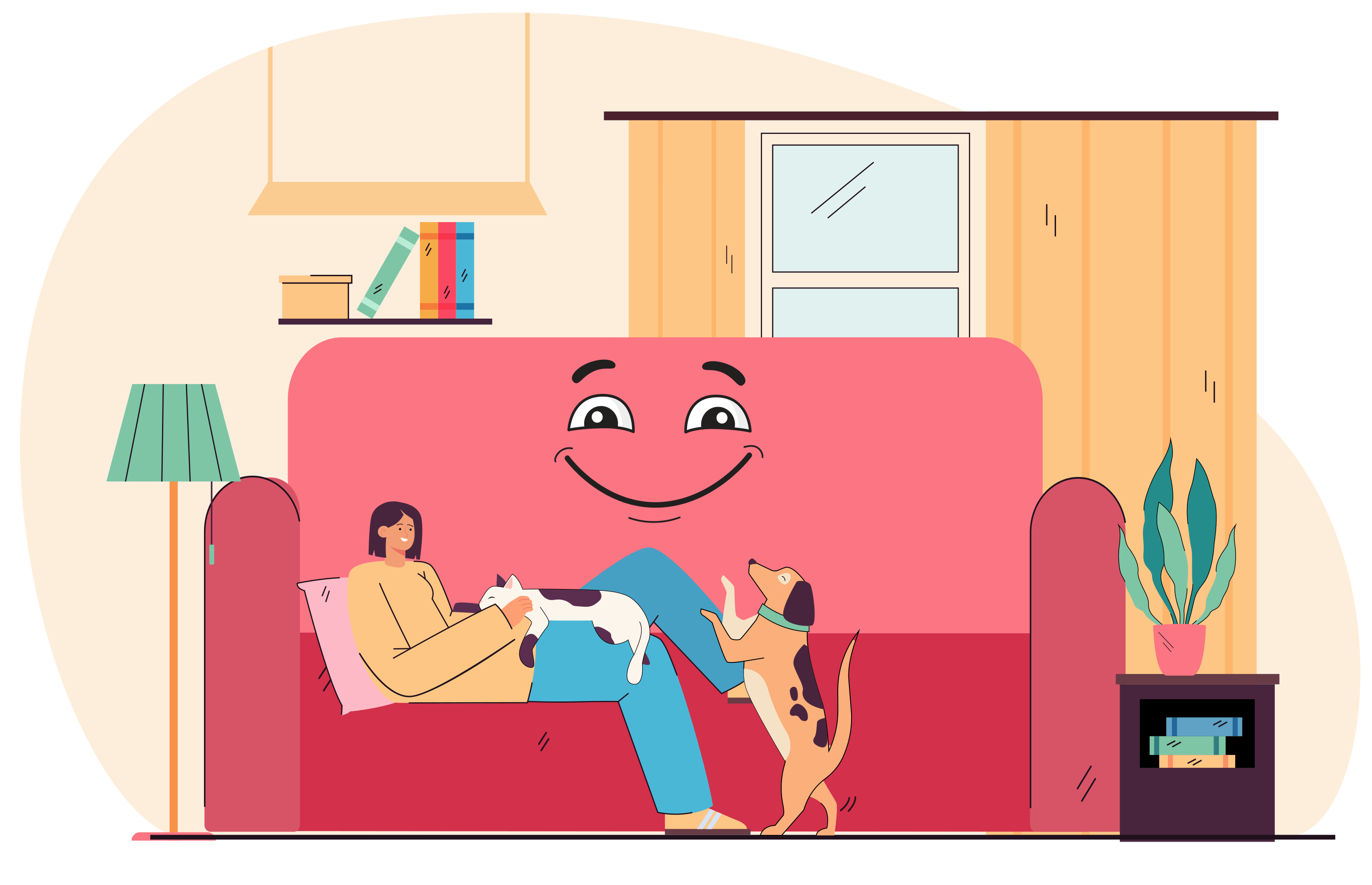How to Live With an Aggressively Comfortable Couch
The issue is unlikely to resolve on its own. With age, many couches become more aggressively comfortable, not less. And a stern scolding yields little more than a whiff of your own feral breath, escalating a desperate situation and the odds of another incident. Manage the situation with the following:
Understand the behavior: Couch “aggression” can mask anxiety, typically caused by pressure to tie the whole living room together — arguably the locus of your household. Many comfortable couches never have formal opportunities to socialize with matching furniture. Your couch may be doing its best to tie something together, such as you and the upholstery.
Identify aggressive posturing. In an attack position, a couch might crouch low, the serpentine suspension system ready to spring. A dangerous couch has a rigid frame of kiln-dried hardwood, a formidable and unmovable force, an anchor by design. It can come at you from all sides.
Approach the couch with caution. Do not allow the couch to make initial contact. Go about your business and refrain from reaching down to caress premium chenille or velvet fabrics. If the couch nudges or bumps you for contact, stand still and slowly turn off “The Great British Baking Show.”
Avoid direct eye contact. Looking at a couch is often the first mistake. While the couch may appear to be a lovable large-breed cross between a cashmere poncho and a cloud, make no mistake — it can swallow you whole.
- Find a safe focal point — often a portrait of mallards — directly above the couch. You can also look at its arm or a stubby, screw-on leg.
- If you accidentally look right at the couch, quickly flick your eyes away. This will often prevent you from getting sucked into an engagement.
Interact with the couch from the side. If you do decide to get closer, walk in an arc, not a straight line. Take a few steps at a time, pausing if you feel the urge to lunge.
You must position your ass at a non-direct angle. If you interact with the couch in an ass-on way, it may increase the comfort. Don’t be surprised if the couch readjusts to anticipate your ass. If this happens, shift over to get off-kilter again.
Throw a few treats down on the ground. If you toss high-value treats near the couch, ones you normally keep away from it, like s’mores or hot wings, you might divert yourself.
- This is an especially positive method for couch owners to use. You may come to associate food with not sitting on the couch and even look forward to sitting on less comfortable furniture.
- Eventually you could tolerate short periods upright at a table, even with guests who popped over without calling.
- Note: Treats may never fully address separation issues with your couch in crowded public areas where fully-grown adults are prone to erratic behavior or tantrums.
Focus on the big picture. Remind yourself about the negative traits your couch possesses. It might be ugly, steal coins, or trap a damp odor known as “ape crotch.”
Identify your couch’s triggers. Comfortable couches often begin as strays from the street. It’s helpful to know your couch’s history.
· Observe your couch’s everyday behaviors. Does it become more comfortable during a thunderstorm? Is it exceptionally aggressive toward men? Does it dominate your pets?
· Don’t discount the possibility that you may be the cause of the aggression. Shed certain clothing items, like jogger pants, to reduce reactivity with bilious high-density foam that can otherwise lull your fight-or-flight reflex into submission for up to twelve hours.
· Guide away anyone at risk of competing for the couch — children, roommates, and especially the in-laws. Most people have no idea what they’re doing, and it falls to you to protect them all the time, which is precisely why if anyone’s going to touch the couch, it should be you. Explain that you’ll be more comfortable if they keep their distance.
Conclusion.
It can be tempting to dismiss a couch incident as a one-off, but a problem couch can take over your life, the world reduced to a single focal point where you spend mealtimes and other people’s birthdays because you can’t leave the couch alone. Take yourself outside sometimes! It’s okay to lounge in the backyard — so long as the neighbor’s hammock remains securely behind perimeter fencing. Self-care means gradual exposure to the barking and chaos “out there.” Take it slowly. Every couch relationship is special — together, there’s nothing you can’t not do.

- About the Author
- Latest Posts
K.E. Flann has published two award-winning short story collections. Her prose has appeared in McSweeney’s, Points in Case, Defenestration, and other publications. A guide book for movie monsters, How to Survive a Human Attack, is out now from Running Press (Hachette). Currently, she teaches at Johns Hopkins University. A craft book, Write On: Critical Tips for Aspiring Authors, was released by Stay Thirsty Publishing.













